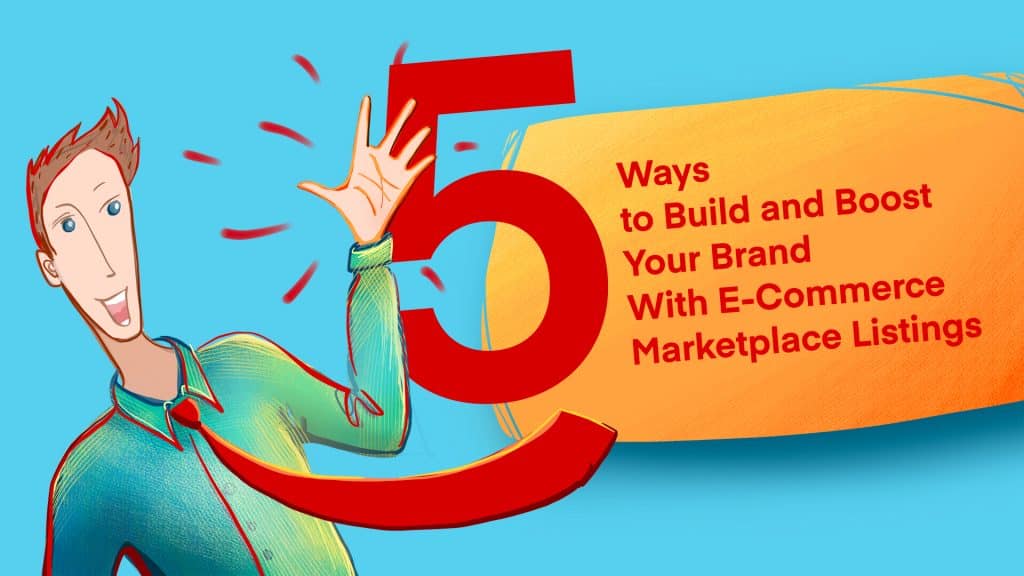
Establishing a brand is a complex proposition. It is more than a sleek logo, name recognition, or strategic plan. Effective branding is about evoking an emotional response in customers and creating connections between your products and consumers. It’s the difference between “Snap, Crackle, and Pop” and a bag of rice puffs.
It’s why people would pay more for coffee in a white paper cup with a green mermaid on it than in a plain white one. It’s why a laptop with a half-eaten piece of fruit on its lid just seems to ‘run better’ than one without it. You know exactly what these brands are without even mentioning a company name.
While you may not share these same feelings, you understand that countless people out there—many in your own life—do. To reach this level of brand awareness takes a multifaceted approach.
SEO experts like Neil Patel have their theories and strategies for reaching this status of notoriety and customer mindshare. However, some experts warn that ecommerce marketplaces have little or no role in establishing an effective brand image.
While this argument makes sense on the surface—selling on a marketplace is both competitive and in service of the marketplace brand as much (if not more so) than your own—it overlooks many of the positive brand-building opportunities these channels can provide.
With Descartes Sellercloud’s omnichannel ecommerce platform, you can leverage listings across various channels to help establish, define, and grow your brand’s stature.
1. Marketplaces Offer Opportunities for Customer Acquisition and Retention
Your brand doesn’t mean much if no one sees your products. Ecommerce marketplaces excel at putting your product in front of many potential customers. According to Statista data, Amazon Marketplace had an unbelievable reach as an online retailer, with more than 2 billion website visits every month in the first quarter of 2023.
Similarly, other ecommerce channels of all types and sizes have enjoyed one of the most drastic periods of growth in history.
Getting your products into these ecosystems is a great way to build a customer base. While people may not be coming to your merchandise by searching specifically for your brand, the reach of these marketplaces gives you a chance to prove the value of your products and establish a reputation.
Customer satisfaction surfaced through positive reviews can expedite this growth and provide testimonials that can help in future brand marketing efforts. What’s more, consistent positive performance in these spaces can encourage repeat purchases, one of the Holy Grails of ecommerce success.
When satisfied customers return to their order histories to seek your products and brand to buy from you again, you know you are on to something.
Descartes Sellercloud’s omnichannel ecommerce platform makes listing your products across multiple marketplaces from a single interface easy. You can bring your listing catalog to a wider audience while tracking key metrics like sales, profit and loss, inventory, RMA requests, and shipping trends to optimize your ability to satisfy customers.
2. Ecommerce Marketplaces Are Great Testing Grounds for Product Marketing and Establishing Your Brand’s Tone
Because ecommerce marketplaces are full of competitors from across the globe, they are a great laboratory for working out what will make your brand stand out from the crowd. Part of what makes a good brand is a personality—an almost intangible belief of what your brand is and what it means.
You are trying to create an overall sense of comfort and appreciation for your products and the level of service you provide. Everything from your product name to your logo, your listing descriptions to your social media presence, your product packaging to your product’s color options comes together to create that feeling (there’s that word again) of what your brand brings to its customers.
It can take some serious trial and error to determine how to get these elements to work together. However, once you do, customers begin to feel what your brand is and what it is about across all these characteristics. You can utilize your marketplace channels for this trial and error as you craft your brand’s persona.
Descartes Sellercloud’s catalog features allow you to create, manipulate, and tweak your listing content across all the places you sell from within a single, easy-to-use interface. Using our shadow SKU features, you can even A/B test different titles, descriptions, and images to see which performs the best. Ultimately, when sales and repeat orders trend upwards, you’re onto something!

3. Ecommerce Channels Can Help You Establish and Assess Your International Appeal
While selling internationally is not as complicated as you might assume (especially with Descartes Sellercloud’s international shipping and payment integrations), it may not always be the right move for all brands and products.
Listing products on third-party marketplace channels with international customer bases can serve as a good litmus test for what products are best suited for selling abroad. Additionally, you can list characteristics like tone, images, price, and even vernacular that resonate with different international buyers.
Furthermore, you can use Fulfilled By Amazon (FBA) or eBay’s Global Shipping Program to reduce logistical challenges when expanding beyond being a domestically-focused brand.
4. Leverage Ecommerce Listings to Boost Your General Brand Exposure
It can be difficult to get noticed online. This is why search engine optimization (SEO) has become—and will remain—a multi-billion-dollar industry. SEO is a critical consideration for your brand’s entire web presence and is worth the time and money you invest in it. It is a critical pathway to increasing your visibility and accessing new and existing customers.
All of the effort you put into crafting the impressions that your brand creates needs to be seen to work. Thankfully, there are plenty of SEO strategies that can help you boost your search engine rankings. One of the most important (and one that often gets overlooked from a brand-building perspective) is using marketplaces to increase your search engine exposure.
The same algorithms combing through your brand homepage also crawl through ecommerce channels—big and small. This means that if you are listing products across multiple marketplaces with keywords and content that match what people are looking for, your brand could ideally appear multiple times across a single search engine results page (SERP).
The same holds for multimedia searches. With the proper keywords and description content, images and videos tied to your marketplace listings could fill potential customers’ search results. This presents a valuable opportunity to help bring the look and feel of your product experience to life in relatable and intriguing ways, all while also doing so in profitable sales channels.
5. Use Your Brand’s Status as a Competitive Advantage
Third-party ecommerce channels can provide big value even after you are farther along in crafting and honing your brand’s image (and even after you are thriving as a first-party seller on your own).
While something is to be said for the profit margins and control afforded by transitioning from third-party to first-party sales, your brand could grow for years and never come close to the customer bases of some of the world’s most popular online marketplaces.
Rather than abandoning third-party marketplaces as your brand grows, consider how your brand’s reputation can be used to outmuscle products from lesser-known or unknown brands in your product categories.
With high enough volume, you could sell at a discount and compete for Buy Box supremacy. Alternatively, you could lean on your brand’s reputation for a higher price and avoid the cutthroat repricing race altogether.
In the end, a strong brand gives you the flexibility to wield marketplace channels strategically, generating profits while attracting more and more people to what defines the feeling of your products and company.
Descartes Sellercloud’s omnichannel ecommerce platform is the perfect partner for establishing and growing your brand through marketplace listings and first-party sales channels.
Contact us directly for a free demo of all our brand can do for you.




